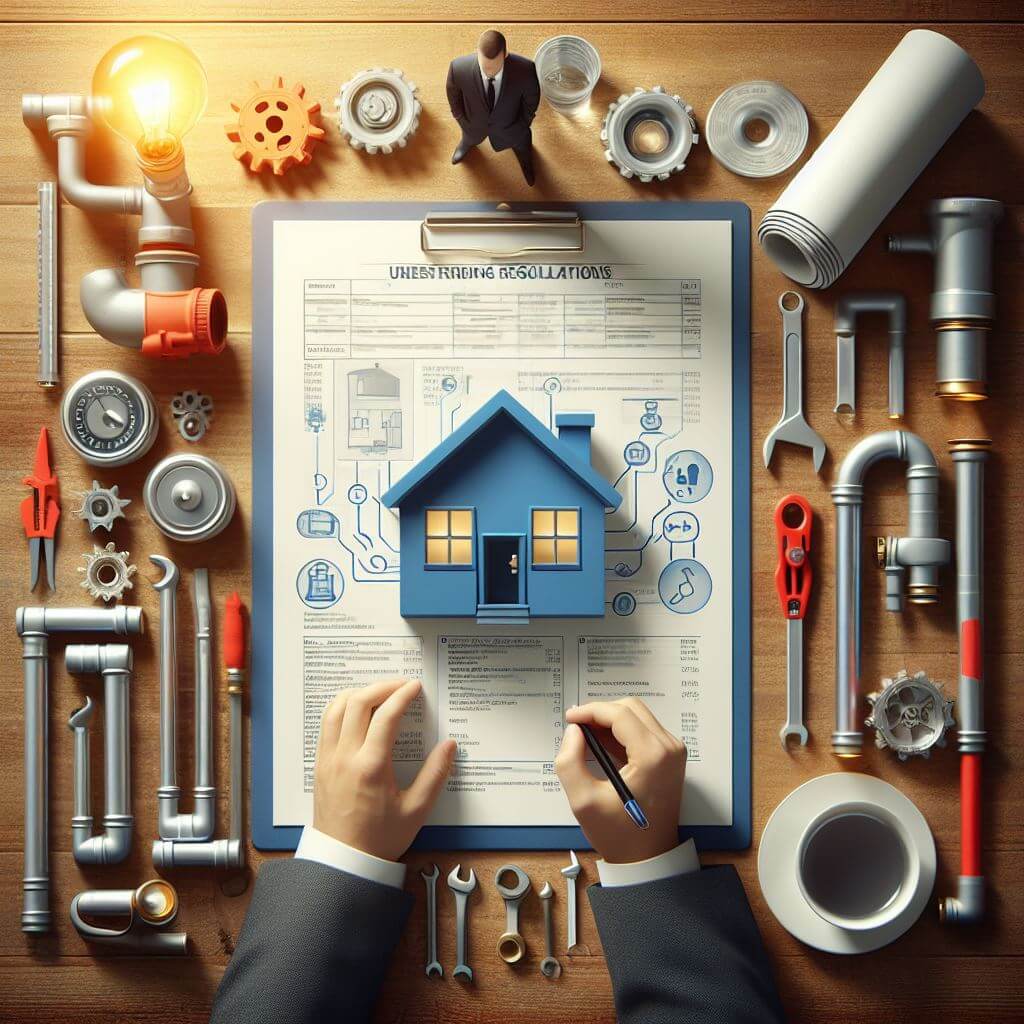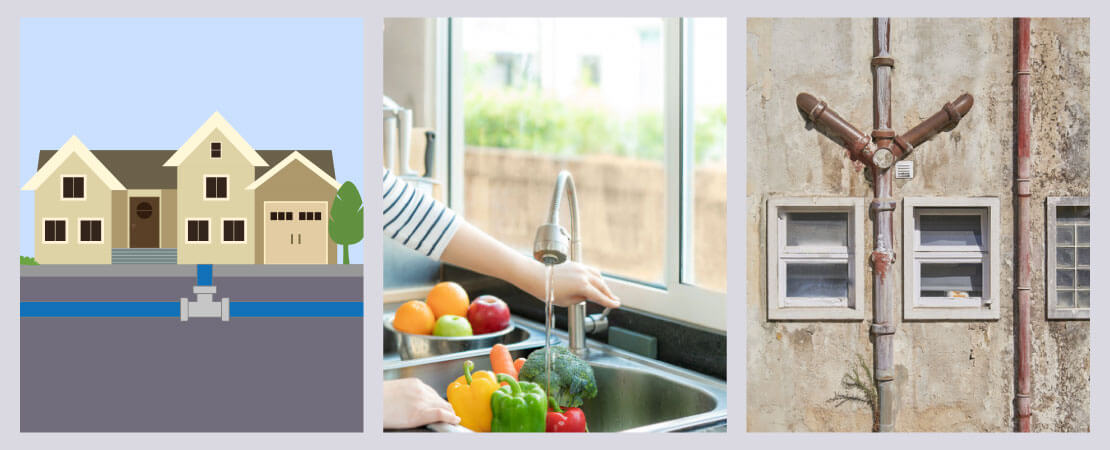Unraveling the Core Concepts of Home Plumbing: A Beginner's Overview
WebsiteJust how do you actually feel in regards to Plumbing Basics Every Homeowner Should Know?

Plumbing is a necessary element of any type of home, responsible for providing clean water for alcohol consumption, food preparation, and bathing, along with getting rid of wastewater securely. Understanding the essentials of home plumbing is vital for every single homeowner to make certain correct upkeep, troubleshooting, and, if necessary, repairs. In this newbie's guide, we'll cover the fundamental principles of home plumbing to assist you end up being much more accustomed to just how it functions.
Water System System
The water system brings tidy water right into your home from a community water source or a private well. It contains a primary water line that connects to your home's plumbing system, normally situated underground. A water meter measures the quantity of water consumed, while a shut-off shutoff permits you to regulate the flow of water right into your home.
Plumbing Fixtures
Plumbing fixtures are devices that supply water to numerous parts of your home and consist of sinks, taps, bathrooms, showers, bathtubs, and home appliances such as dish washers and washing devices. Each component is linked to the supply of water system by means of pipelines and fittings and might have its shut-off valve for maintenance or emergency situations.
Water Heating System
The water heating unit is responsible for home heating water for residential use, consisting of showering, food preparation, and cleansing. Usual types of water heaters consist of tank-type water heaters, tankless (on-demand) water heaters, and heat pump hot water heater. The hot water heater is linked to the water system system and supplies hot water to plumbing fixtures as required.
Drain System
The drainage system gets rid of wastewater from your home and brings it away to a sewage therapy facility or septic tank. It contains a network of pipelines, fittings, and components that deliver wastewater from plumbing fixtures to the major drain line or septic system. Appropriate drainage is vital to avoid clogs, back-ups, and sewage leakages.
Ventilation System
The air flow system aids preserve proper atmospheric pressure and protect against sewer gases from entering your home. Vent pipelines, likewise called vent stacks, prolong from plumbing components to the roof, permitting drain gases to escape safely outdoors. Ventilation pipes additionally allow air to go into the water drainage system, helping with smooth wastewater circulation and preventing suction or vacuum effects.
Typical Plumbing Devices
Having the right devices available is crucial for carrying out standard plumbing repairs and maintenance jobs. Usual plumbing tools consist of flexible wrenches, pipe wrenches, pliers, pipe cutters, hacksaws, plungers, augers (or drainpipe serpents), and Teflon tape. Having these devices readily available can assist you take on minor plumbing problems successfully.
Standard Plumbing Repairs
While some plumbing repair services might call for professional assistance, numerous usual issues can be addressed with fundamental DIY strategies. Understanding just how to fix a leaky faucet, unclog a drain, change a toilet flapper, or repair a leaking showerhead can save you time and money on plumbing repair services.
Conclusion
Recognizing the essentials of home plumbing is necessary for every house owner to maintain a secure, useful, and effective plumbing system. By acquainting on your own with the water system system, plumbing components, drainage system, ventilation system, usual plumbing tools, and standard repair work, you can with confidence attend to minor plumbing problems and ensure your home's plumbing system runs efficiently.
Plumbing for Beginners: A Comprehensive Guide
If you’re a beginner when it comes to plumbing, don’t worry; you’re not alone. Plumbing may seem intimidating, but with the right knowledge and a little practice, you can handle many common plumbing issues on your own. In this comprehensive guide, we will demystify the world of plumbing for beginners, providing you with the basic knowledge and skills needed to tackle common plumbing problems and even take on some DIY plumbing projects.
The Importance of Basic Plumbing Knowledge for Beginners:
First and foremost, basic plumbing knowledge gives you a solid foundation. It helps you grasp the key concepts and terminology that are essential in this field. By learning the basics, you’ll be able to build upon that knowledge and tackle more complex plumbing tasks in the future.
Having a basic understanding of plumbing also enables you to handle common issues that may arise in your home. Picture this: a leaky faucet or a clogged drain. With some basic plumbing knowledge, you’ll have the confidence to troubleshoot and fix these problems on your own. It saves you from unnecessary expenses and the hassle of waiting for a professional to arrive.
As a beginner, learning the basics of plumbing empowers you to take care of your own home. It gives you a sense of independence and self-reliance. You’ll no longer have to rely solely on professionals for every small issue that pops up. Instead, you can handle many tasks yourself, saving time and money in the process.
Remember, everyone starts as a beginner. Embrace the learning process and take small steps to expand your plumbing knowledge. There are plenty of online resources, tutorials, and even local workshops that talk about plumbing for beginners.
Essential Tools for Plumbing for Beginners
As you start your plumbing journey, having the right tools in your toolbox is crucial. Let’s explore some of the must-have tools:
Adjustable Wrench:
This versatile tool is a staple in any plumber’s toolbox. It allows you to tighten or loosen nuts and bolts of various sizes. Make sure to have an adjustable wrench with a comfortable grip.
Pipe Wrench:
A pipe wrench is specifically designed for gripping and turning pipes. It has serrated jaws that provide a strong grip, making it easier to loosen or tighten threaded pipes and fittings.
Plunger:
The plunger is a simple yet effective tool for clearing clogged drains and toilets. It creates suction when you push and pull, helping to dislodge blockages. Keep a good-quality plunger handy for those unexpected clogs.
Pipe Cutter:
When it comes to cutting pipes, a pipe cutter is your go-to tool. It creates clean, precise cuts without damaging the pipe. Look for a pipe cutter that can handle the pipe sizes you’re working with.
Hacksaw:
A hacksaw is useful for cutting through pipes, screws, and other materials. It’s a versatile tool that can handle different cutting tasks. Remember to use a blade suitable for cutting metal.
Tape Measure:
Accurate measurements are crucial in plumbing. A tape measure allows you to measure pipe lengths, distances, and dimensions accurately. Opt for a sturdy tape measure that extends a good length.
Pliers:
Pliers come in handy for various tasks, such as gripping, bending, and cutting. Slip-joint pliers with adjustable jaws are great for gripping pipes, nuts, and bolts.

Do you like reading about ? Put feedback further down. We would be glad to know your responses about this blog. We hope that you visit us again soon. Do you know about anybody else who is fascinated about the subject? Do not hesitate to promote it. Bless you for your time. Kindly come by our site back soon.
Call